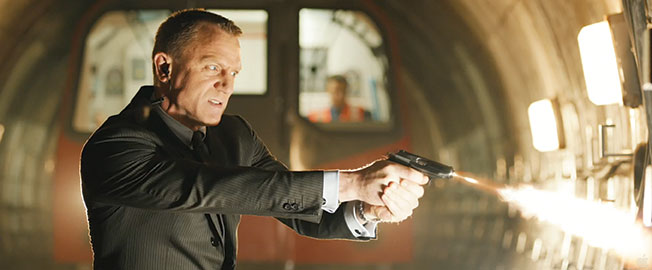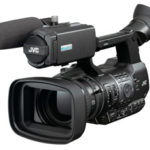
How To: Do ArriRAW Properly Part One
Posted on Feb 19, 2013 by Alex Fice
Skyfall used ArriRAW to set it’s look.
After the release of Gambit last November, written by the Coen brothers and directed by Michael Hoffman, 4K London look at the ArriRAW workflow they used and how to gain the best results from this film-esque digital format. In Part Two 4K London look more at the Post route of ArriRAW.
Looking at the variety of films released and due to be released over the next twelve months – Skyfall, Gambit, Rush, Trance – all of which owe their ‘look’ to the file format ArriRAW – it’s difficult not to commend Arri for implementing another file format that pleases both the audiences and those who work with it.
ArriRAW offers the nuances of 35mm film with all the advantages of digital acquisition that have become common place elsewhere. The ability to capture in 12-bit RAW and up to a resolution of 2.8K gives the flexibility of creating a ‘look‘ traditionally associated with shooting film, which could not come at a better time as celluloid looks to make an exit from commercial filmmaking over the next couple of years.
4K London’s Workflow Supervisor Tristan Hey looks back to November’s release of Gambit, taking us through the workflow used for one of the first ArriRAW features shot in this country and how Digital Imaging Technician Dan Carling worked with the format to digitally realise DoP Florian Ballhaus’ vision.
Question 1: What first comes to mind when you know ArriRAW is to be used on a feature?
The first thing to understand is that ArriRAW cannot be captured directly to the Alexa camera itself. The Alexa can capture various flavours of codecs, ProRes being the most common shooting at 12-bit ProRes 4:4:4:4 Log C with a frame size of 1920×1080 (a lossy video compression) this is stored onto removable Sony SxS cards.
To acquire the full 12-bit ArriRAW 2800×1620 feed, an external recorder is required. In the case of Gambit, the Codex On Board M external recorder was used; other options include the Gemini 4:4:4 and the S.Two OB-1.
The external recorders allows the capture of the uncompressed, unaltered Bayer sensor information by taking direct electrical values from the ‘photosites’ of the camera sensor without any processing or manipulation. This allows for the full sensor range of the camera to be captured (2800×1620) and gives an extended range of latitude to the image.
The data weight comparison between shooting ProRes and ArriRAW is vast, approximately 10GB per minute shooting at 24fps full frame 12bit, as opposed to 2GBs at ProRes.
Question 2: Can you explain the Codex workflow?
Using the Codex in conjunction with the Alexa on Gambit brought a new technical challenge: communicating with the recorder. The user can interface with the Codex using two methods, through the On Board control panel located on the device or by the virtual User Interface (UI) running on a Mac or PC. This interfaces using a standard RJ-45 Cat 5 (ethernet) cable.
Both options essentially control the same elements of the Codex workings. However, to allow us to benefit from on-set colour management on Gambit and allow monitoring of the live feed from the camera within a close distance, we had several custom-made wiring looms manufactured containing both Cat-5 and BNC cables.
By having this control it allowed for DIT Dan Carling to playback the ArriRAW from the Codex On Board directly after a take to verify the material had captured correctly or to playback an earlier shot for DoP Florian Ballhaus. He also had the option of inputting or changing metadata for example, Take, Scene, location.
In conjunction with the Codex On Board recorder, we used Filmlight’s Truelight On Set colour management system, which allowed Dan and Florian greater control of the look.
Question 3: Why is on-set colour management important when using ArriRAW?
On-set colour management gives a new level of creative control giving a colour adjustment of the live SDI signals outputted from camera. This can give an immersive feel to a project long in advance of the grading process and the ‘look’ created on set can then be passed through the editorial pipeline. Essentially what you see on-set is what you will see in the edit, DVDs or H.264s or material viewed at all-important screenings with executives and financiers. This gives everyone a great reference point of what to expect from the grade months down the line.
Without a colour management system only certain ‘looks’ can be set to the live SDI feed, these will be set-looks and maybe perfect for certain lighting conditions or scenes but the advantages of changing shadows, midtowns or highlights in an instant and in a completely non-destructive method is left to ArriRAW.
Question 4: How does on-set colour management work then?
On-set colour management is a process used to non-destructively apply a ‘look’ to the live signal from the camera, instantly on set. In the case of Gambit, Dan took the LOG C feed, a desaturated, high latitude image and would apply a colour change using a custom made 3D LUT stored on the Truelight On-Set colour management system.
The signal would then travel back to set via a video matrix switch, controlled by the Dan, and would allow Florian to view a first pass grade of the live image on a Grade 1 monitor and give him the opportunity to pass decision amendments on the ‘look’.
The colour changes Dan was making were saved as CDL (Colour Decision List) values and referenced the 3D LUT. These CDLs were pinged back to the Codex On Board and stored within the metadata, as well as been stored locally in the Truelight software.
Question 5: How does this all get transferred to post-production?
Once the Codex Datapack has been filled it will travel to the data lab with the camera report sheets (CRS). At this level the Datapack will be mounted on the proprietary docking station via SAS and all metadata will be checked against the CRS and changed if required.
The Codex volume is then mounted as an Arri-RAW file and undergoes a checksum copy to external raided storage where it is parked for processing and external dual backup to LTO5 tape. All material is then Quality Controlled (QC’d) for data errors.
Using the CDL values located in the metadata, these are then referenced against the 3D LUT which replicates the on-set processes and in turn takes the 2.8K 12bit ArriRAW into the on-set colour ‘look’. From here the deliverables are made. These will have the on-set ‘look’ burnt into them and are then delivered to the assistant editor, ready for sound sync.
Once this process is complete the Datapack is formatted and returned to set.
Question 6: Who do I need to work this equipment?
You’ll need a Digital Imaging Technician (DIT) who has both Codex and on-set colour management training. They come with years of experience in the camera department, extensive camera know-how and respect the fragility of digital data.
They can also integrate a waveform monitor into the setup, invaluable when you want to check the colour scale of an image or see how over- or under-exposed an image is. The last thing you want is a ‘thin neg’.
Gambit was the first feature to use the Truelight system with a Codex recorder. It was also the first ArriRAW feature to come through 4K London, to Senior DIT Dan Carling. Dan has since worked on other long form or feature projects and also on short form projects which are increasingly adopting the ArriRAW format.
Question 7: Any other tips?
Yes! Make sure you calibrate your Grade 1 monitors with those in the post house you’re working with. If the gamma rating is wrong on the monitors you’re using on set, the 3D LUT has been set to a different gamma ratio and editorial will receive dailies with incorrect CDLs.
This essentially means post-production will grade differently to how the DoP wanted and the on-set colour management will have been wasted. If you can ensure you are within a two percent tolerance between monitors, you’re safe.
After all that, it seems the following need to be addressed when and before working with ArriRAW:
• Digital Imaging Technician involvement from the moment the DoP starts prepping.
• Using a Codex or alternative ArriRAW recorder.
• (Optional) On-set Colour Management system. In this case – Truelight On Set
• Monitor calibration with those used a) to show dailies whilst shooting continues b) by editorial and c) for when screenings take place.
Once you have all of the above, the final thing to remember is that ArriRAW is, fundamentally, just another camera shooting format. It may need investment in hardware and someone experienced and trained to control it, but that goes for most popular high-end digital cameras on the market.
Setting up the recorder and using it with the on-set colour management is the challenge, and also where the results come from.
Whether you are a producer looking for high production value, a DoP lamenting over 35mm film subtleties or a Digital Imaging Technician looking to expand your experience, working with ArriRAW is climbing in popularity within the feature film and commercials industries and is an asset to all those interested in visual quality.








